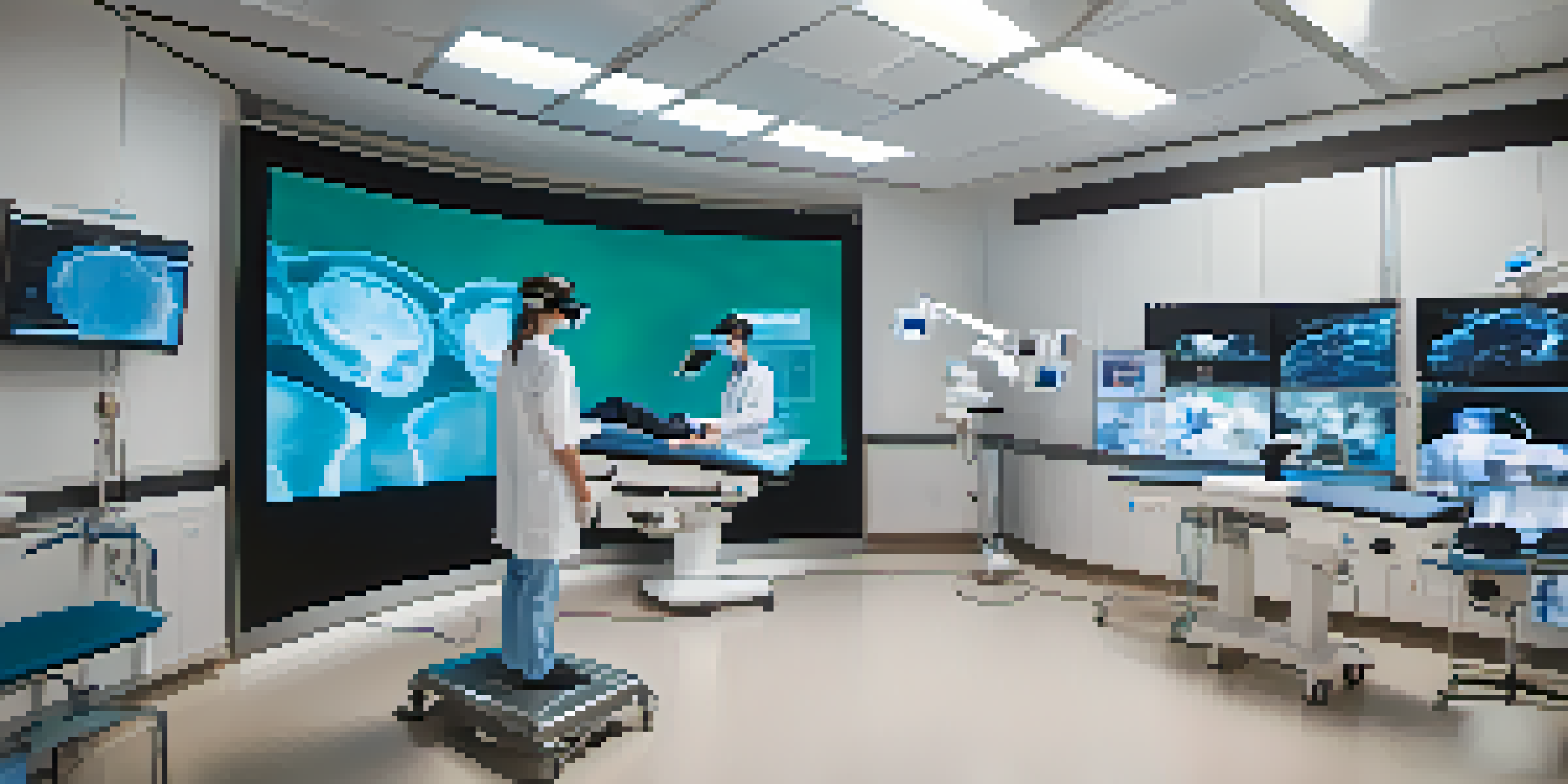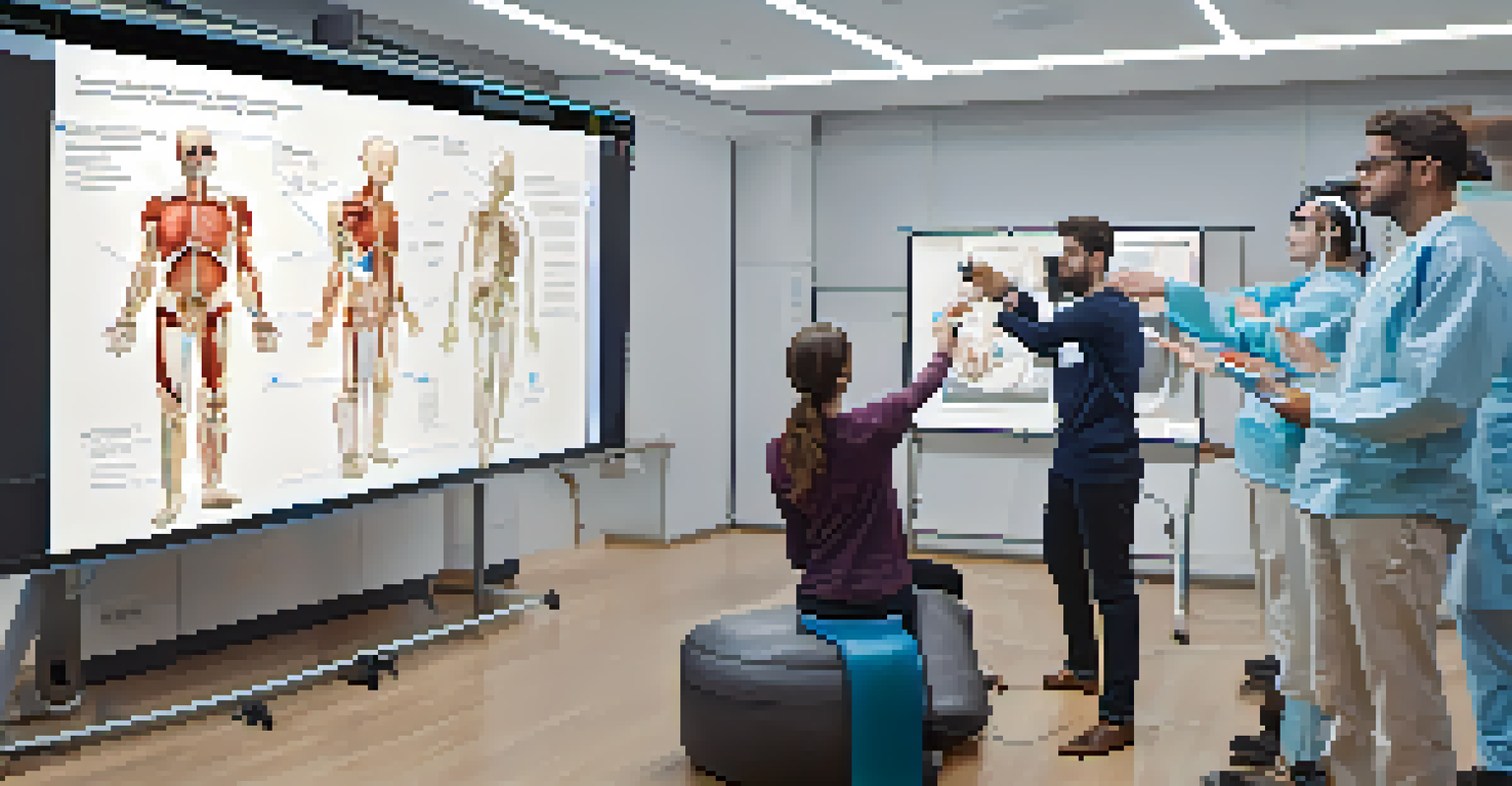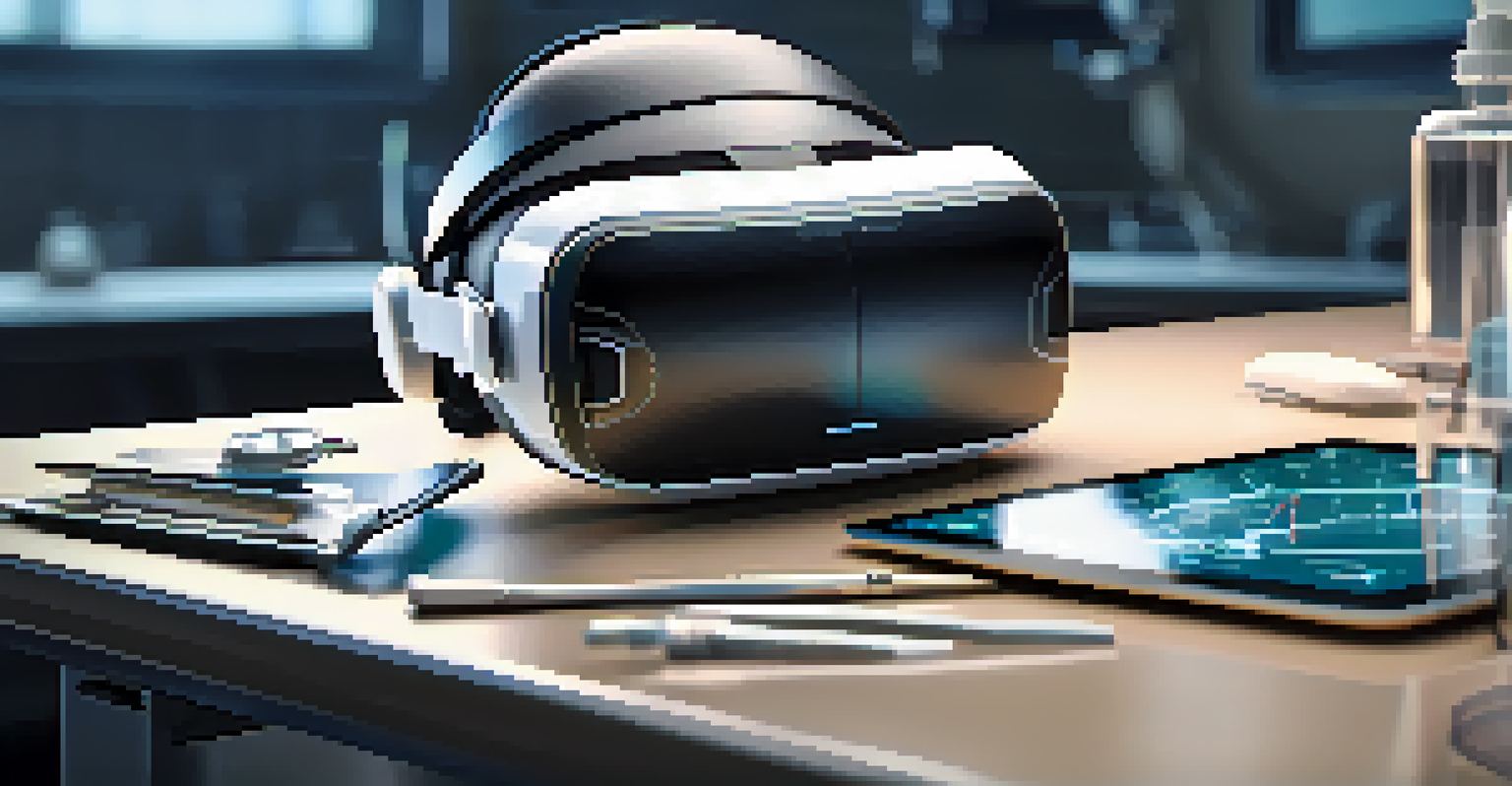Virtual Reality in Medical Training: A Game Changer

Understanding Virtual Reality in Healthcare Training
Virtual reality (VR) is a technology that immerses users in a simulated environment, allowing them to interact with it as if it were real. In the context of medical training, this means that aspiring doctors and nurses can practice procedures in a risk-free setting. Imagine being able to perform surgeries or diagnose patients without any consequences; that's the promise of VR.
Virtual reality empowers healthcare professionals to learn in a way that is both safe and effective, bridging the gap between theory and real-world practice.
Using VR, trainees can visualize complex procedures, enhancing their understanding of human anatomy and medical techniques. This tool is particularly beneficial for those who learn best through hands-on experience, as it bridges the gap between theory and practice. By creating a realistic, immersive environment, VR helps build confidence before working with actual patients.
Moreover, VR can simulate various scenarios, including emergency situations. This allows medical professionals to prepare for high-pressure environments without the fear of making a mistake. Overall, VR is reshaping how we approach medical training, making it more interactive and effective.
Benefits of VR Training for Medical Professionals
The advantages of incorporating VR into medical training are numerous. For starters, it offers a safe space for learners to make mistakes, fostering an environment of growth. Unlike traditional training methods, where errors can have serious repercussions, VR allows for repeated practice until proficiency is achieved.

Additionally, VR training can be customized to meet the specific needs of each learner. For example, a student struggling with certain procedures can focus on those areas without the pressure of a live audience. This personalized approach can lead to quicker mastery of essential skills, ultimately benefiting patient care.
VR Enhances Medical Training Effectively
Virtual reality provides immersive, hands-on experiences that allow medical trainees to practice skills in a risk-free environment.
Moreover, VR can enhance collaboration among medical teams. By participating in shared virtual experiences, professionals can practice communication and teamwork in realistic scenarios. This not only improves individual skill sets but also strengthens the overall effectiveness of healthcare teams.
Real-World Applications of VR in Medical Education
Several medical schools and institutions are already leveraging VR to enhance their training programs. For instance, some universities have developed immersive simulations that allow students to practice surgical techniques on virtual patients. These programs have proven to be effective, with students demonstrating higher retention rates and improved performance in real-life situations.
The future of medical training lies in immersive technologies like virtual reality, which can reshape how we prepare our healthcare workforce.
Additionally, VR is being used for patient education, allowing individuals to understand their conditions better. By visualizing their anatomy and treatment options in a virtual environment, patients can make more informed decisions about their health. This not only empowers patients but also improves overall satisfaction with care.
Furthermore, VR technology is being explored for continuing education for existing healthcare professionals. With the rapid advancement of medical practices, VR training can keep professionals updated on the latest techniques, ensuring they provide the best possible care.
Challenges in Implementing VR in Medical Training
While the benefits of VR in medical training are substantial, there are challenges to consider. One major hurdle is the cost of acquiring and maintaining VR technology. Many institutions may struggle with the financial investment required to implement these advanced systems, especially smaller organizations with limited budgets.
Another challenge is the need for proper training on how to use VR technology effectively. Instructors and students alike may require guidance to navigate these new tools. Without adequate training, the potential of VR may not be fully realized, leading to frustration and underutilization.
Personalized Learning Through VR
VR training can be tailored to individual needs, enabling learners to focus on specific skills and improve at their own pace.
Lastly, there's the issue of technological accessibility. Not all medical programs may have access to the latest VR equipment, creating disparities in training. To truly revolutionize medical education, efforts must be made to ensure that all institutions can benefit from this innovative approach.
The Future of VR in Medical Training
As technology continues to evolve, the future of VR in medical training looks promising. Advancements in VR equipment and software are likely to make these tools more affordable and user-friendly. This could lead to wider adoption across medical schools and hospitals, further transforming how medical education is delivered.
Additionally, as research continues to demonstrate the effectiveness of VR training, we may see more funding and support for these programs. Educational institutions and healthcare organizations could prioritize VR integration, recognizing its potential to enhance learning and improve patient outcomes.
Ultimately, the goal is to create a more competent and confident healthcare workforce. With VR as a key player in medical training, we may be on the brink of a significant shift in how healthcare professionals are prepared for the challenges they will face in the field.
Case Studies: Success Stories in VR Medical Training
Several institutions have already reported success using VR in their training programs. For example, the University of Illinois at Chicago developed a VR program for surgical training that has shown impressive results. Students who participated in the VR simulations performed significantly better in practical assessments compared to their peers who relied solely on traditional methods.
Another noteworthy example comes from Stanford University, where VR has been integrated into their anatomy courses. Students have found that visualizing and interacting with 3D models of the human body enhances their understanding of complex structures. This approach has led to improved academic performance and greater engagement in the learning process.
Challenges in VR Adoption Persist
Despite its benefits, the high cost of technology and the need for proper training pose significant challenges to implementing VR in medical education.
These success stories highlight the transformative power of VR in medical training. As more institutions share their experiences and outcomes, the case for adopting this technology becomes stronger, encouraging others to follow suit.
Concluding Thoughts on VR in Medical Education
In conclusion, virtual reality is proving to be a game changer in medical training. Its ability to provide immersive, hands-on experiences allows aspiring healthcare professionals to learn and practice in ways that traditional methods simply cannot offer. As we move forward, embracing this technology will be crucial in preparing the next generation of medical practitioners.
The challenges of implementing VR should not overshadow its potential. With ongoing advancements and increased accessibility, we can anticipate a future where VR becomes a standard tool in medical education. This evolution will not only benefit learners but ultimately lead to improved patient care.

As we continue to explore the possibilities of virtual reality, it's essential to remain open to innovation. By fostering a culture of experimentation and adaptation in medical training, we can ensure that healthcare professionals are equipped with the skills they need to thrive in an ever-changing landscape.